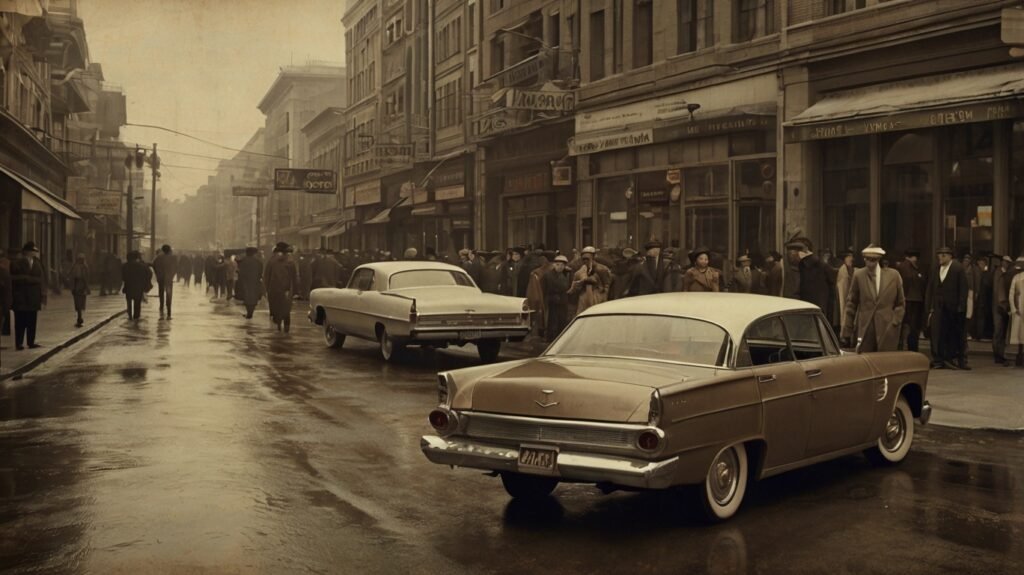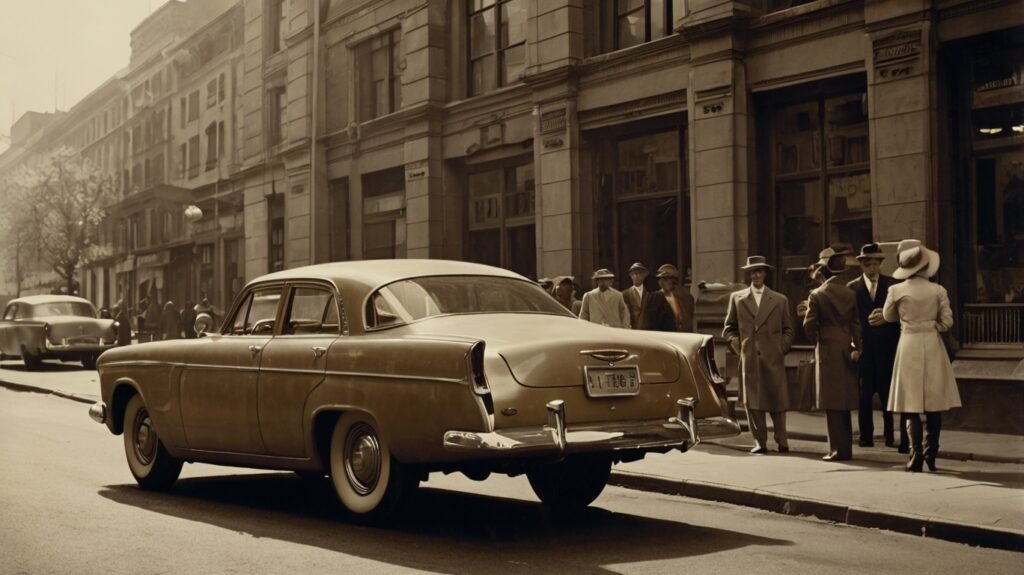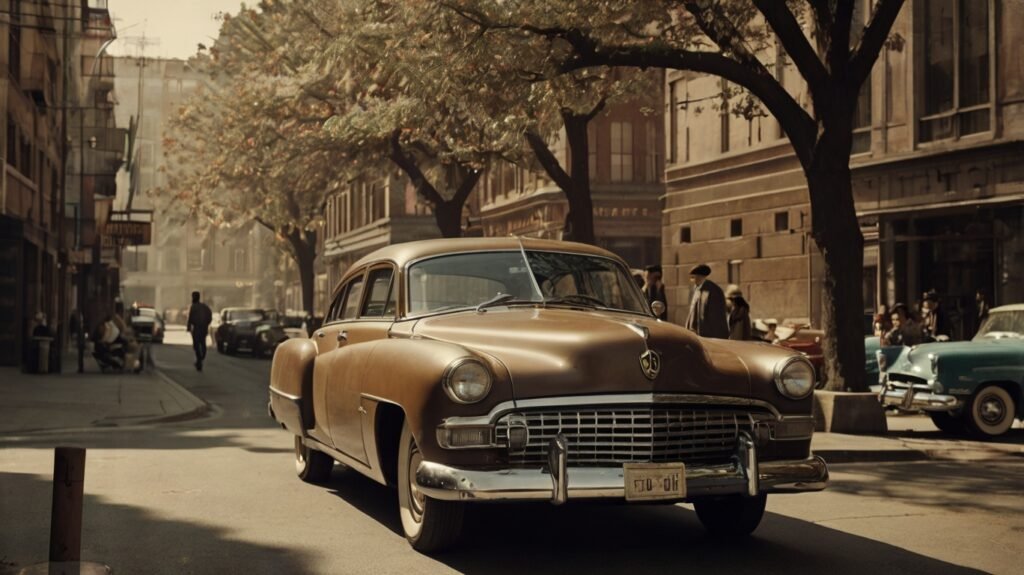In today’s digital age, preserving memories has become a whole new meaning. Imagine holding a faded, damaged photograph that once captured a cherished moment, only to see it burst into life with clarity and vibrance. How AI is Revolutionizing Photo Restoration is not just a futuristic concept—it’s a transformative reality that is redefining how we reconnect with our past. In this comprehensive post, we’ll explore the evolution of photo restoration, the cutting-edge technologies driving this change, real-world applications, challenges, and what the future holds for this remarkable field.
Table of Contents
ToggleIntroduction: Breathing New Life into Old Memories
Have you ever stared at an old family photo, wondering if there was a way to restore its faded glory? I remember the day I discovered a sepia-toned photograph of my grandparents tucked away in a dusty album. Its details were almost lost to time, yet the emotions it evoked were vivid. That moment sparked my curiosity about photo restoration—a process that, thanks to artificial intelligence, has now entered a new era.

Today, we’re exploring How AI is Revolutionizing Photo Restoration. This article is designed for photography enthusiasts, digital archivists, and anyone interested in the innovative intersection of art and technology. We’ll break down complex ideas into digestible parts, share real-life case studies, and provide actionable insights to help you appreciate and possibly even leverage AI in your restoration projects.
The Evolution of Photo Restoration: From Manual Techniques to Digital Magic
Traditional Methods and Their Limitations
Historically, photo restoration was a painstaking manual process. Skilled artisans would use tools like airbrushes and pencils to repair damaged areas on physical prints. Techniques included:
– Physical Restoration: Repairing tears and discolorations on physical photographs.
– Digital Scanning and Editing: Using software like Adobe Photoshop to manually retouch scanned images.
While these methods produced admirable results, they were time-consuming, required specialized skills, and often depended on subjective judgment. The challenge was always consistency—restoring one section of a photo could inadvertently alter another.
Enter Artificial Intelligence
With the advent of AI, the landscape of photo restoration has changed dramatically. Instead of relying solely on manual intervention, AI algorithms analyze patterns, textures, and structures within an image. They can predict missing details and even recreate parts of a photo that have been severely damaged. This marks a significant shift from labor-intensive restoration to automated, scalable solutions that offer unprecedented levels of precision and speed.
Understanding AI in Photo Restoration
What is AI-Powered Photo Restoration?
At its core, AI-powered photo restoration involves the use of deep learning models to enhance and repair photographs. These models are trained on vast datasets of images, allowing them to learn intricate details about lighting, texture, and color. When applied to a damaged photo, AI can:
– Fill in Missing Pixels: Through techniques like image inpainting, AI predicts and restores missing parts.
– Enhance Resolution: Using super-resolution algorithms, blurry images are transformed into clearer, sharper pictures.
– Correct Color and Contrast: AI can automatically adjust color balance and contrast to rejuvenate faded photographs.
The Science Behind the Magic
Several AI techniques are at play in this revolution:
– Convolutional Neural Networks (CNNs): These are especially good at recognizing spatial hierarchies in images, making them ideal for identifying and reconstructing damaged sections.
– Generative Adversarial Networks (GANs): GANs consist of two neural networks—the generator and the discriminator—that work together to produce more accurate and realistic restorations.
– Deep Learning-Based Inpainting: This method allows the algorithm to intelligently “guess” and replace missing portions of an image, creating seamless restorations.
Imagine a neural network that’s been meticulously trained on thousands of vintage photographs. When presented with a torn or faded image, it leverages its learned knowledge to not only repair but also enhance the photograph, revealing details that were once obscured by time.
Techniques and Technologies Driving AI Photo Restoration
The Role of Deep Learning and Neural Networks
Deep learning has become the cornerstone of modern photo restoration. Neural networks, with their layers of interconnected nodes, mimic the human brain’s ability to recognize patterns and make predictions. Here’s how they work in photo restoration:
1. Data Training: The model is trained using a large dataset of both pristine and damaged images. Over time, it learns to identify the subtle differences between a well-preserved photograph and one in need of restoration.
2. Pattern Recognition: Once trained, the AI can analyze new images, detect inconsistencies, and infer what the original image might have looked like.
3. Restoration Process: The AI applies its learned patterns to repair and enhance the image, filling in missing details, correcting colors, and sharpening features.
Advanced Algorithms in Action
Beyond neural networks, other algorithms and techniques have significantly contributed to the field:
– Super-Resolution Algorithms: These increase the resolution of an image, making it sharper and more detailed. This technology is especially useful for old photographs that were scanned at lower resolutions.
– Image Segmentation: By breaking an image into segments, AI can focus on restoring specific areas without affecting the entire image.
– Edge Detection and Texture Synthesis: These techniques help in recreating the fine details of an image, ensuring that the restored parts blend seamlessly with the original.
Integrating AI with Traditional Techniques
While AI is powerful on its own, its integration with traditional restoration methods has proven to be a game-changer. Professional restorers often use AI as a first pass to repair major damages, followed by manual touch-ups to perfect the details. This hybrid approach leverages the speed and consistency of AI while retaining the nuanced artistry of human intervention.
Real-World Applications and Case Studies
Restoring Family Heirlooms
One of the most touching applications of AI in photo restoration is the revival of family heirlooms. Consider the story of a family that discovered a trove of damaged photographs in their attic. With the help of AI-powered tools, each image was restored to its former glory—capturing the smiles, the attire, and even the subtle expressions of loved ones long gone. This technology not only preserves history but also strengthens familial bonds by reconnecting generations through visual storytelling.
Museums and Historical Archives
Museums and historical institutions have also embraced AI to preserve cultural heritage. Renowned museums are digitizing their archives, using AI to restore photographs that date centuries. This not only aids in preserving these artifacts for future generations but also makes them accessible to a global audience via online platforms.
For example, an art museum might use AI to restore a century-old photograph of a historical event. The restored image can then be displayed alongside the original, providing a dramatic visual contrast and sparking renewed interest in the historical narrative.
Commercial Applications and Digital Platforms

Beyond personal and historical restoration, commercial applications are booming. Digital platforms that specialize in photo restoration are now offering AI-powered services to customers worldwide. Whether it’s for a professional photographer wanting to enhance their portfolio or a business digitizing historical records, AI is providing efficient and cost-effective solutions that were unimaginable just a few years ago.
Benefits of AI in Photo Restoration
The advantages of leveraging AI in photo restoration are manifold. Here are some of the key benefits:
1. Speed and Efficiency
– Rapid Processing: AI can restore a photo in a fraction of the time it would take a human expert.
– Bulk Restoration: Large volumes of photos can be restored simultaneously, making it ideal for museums, archives, or personal collections.
2. Cost-Effectiveness
– Reduced Labor Costs: Automation means fewer man-hours spent on each project.
– Scalability: Services can be scaled to meet the demands of both small personal projects and large institutional archives.
3. Consistency and Precision
– Uniform Results: AI delivers consistent quality across multiple images, eliminating the variability inherent in manual processes.
– Detail Enhancement: Advanced algorithms can detect and restore minute details that might be overlooked by the human eye.
4. Accessibility
– User-Friendly Tools: Many AI restoration tools are designed with intuitive interfaces, making them accessible even to those without technical expertise.
– Wider Reach: With cloud-based services, users from around the world can access high-quality restoration tools without needing specialized hardware or software.
5. Preservation of History
– Cultural Heritage: By restoring old and damaged photos, AI helps preserve historical records and cultural heritage for future generations.
– Emotional Connection: Reviving cherished memories fosters a deeper emotional connection with the past, keeping personal histories alive.
Challenges and Ethical Considerations
Despite the transformative benefits, the integration of AI into photo restoration is not without its challenges and ethical dilemmas.
The Risk of Over-Restoration
One of the primary concerns is the potential for over-restoration. When an algorithm “guesses” too much, it might inadvertently alter the authenticity of the original image. Striking a balance between enhancement and preservation is critical. Restorers must ensure that the AI’s interventions remain true to the original while improving visual quality.
Data Bias and Training Limitations
AI models are only as good as the data they are trained on. If the training data is biased or unrepresentative, the restoration might favor certain styles or overlook critical details. Continuous updates and diverse training datasets are essential to ensure fairness and accuracy in the restoration process.
Ethical Use of Restored Images
There is also the ethical consideration of ownership and authenticity. When restoring historical images, it’s important to acknowledge the original context and ensure that the restored version does not misrepresent historical facts. Transparency in the restoration process helps maintain trust and credibility.
Maintaining Human Oversight
While AI can perform many tasks autonomously, human oversight remains indispensable. Skilled restorers provide the final touch to ensure that the restored image retains its historical integrity and emotional value. A collaborative approach between AI and human experts is often the best way forward.
The Future of AI Photo Restoration
The potential of AI in photo restoration is only beginning to be realized. Looking ahead, several trends suggest that the future is incredibly promising:
Integration with Augmented and Virtual Reality
Imagine being able to step into a virtual museum where every artifact, including photographs, has been restored to perfection. Augmented Reality (AR) and Virtual Reality (VR) could allow users to interact with restored images in immersive ways, providing a richer understanding of history and art.
Personalized Restoration Services
As AI technology advances, we can expect even more personalized restoration services. Algorithms will likely be able to tailor their restoration techniques based on the unique characteristics of each image, ensuring an even higher level of detail and accuracy.
Enhanced Collaborative Platforms
Future platforms may enable real-time collaboration between AI systems and human experts. Such integration could lead to a more efficient restoration process, combining the strengths of both automated technology and human creativity.
Expanding Applications Beyond Photography
The underlying principles of AI-powered restoration could extend beyond photographs to include video restoration and even the preservation of digital art. As AI continues to evolve, its applications in digital preservation will only grow, providing new avenues for protecting our visual heritage.
FAQ Section
What is AI photo restoration?
AI photo restoration is the process of using artificial intelligence and machine learning techniques to repair, enhance, and rejuvenate damaged or aged photographs. It involves advanced algorithms that can fill in missing details, enhance resolution, and restore color and contrast.
How does AI compare to traditional photo restoration methods?
Unlike traditional methods that require manual retouching, AI photo restoration automates much of the process, delivering faster and more consistent results. However, while AI handles the heavy lifting, human oversight is still crucial for achieving the best outcomes.
Is AI photo restoration expensive?
The cost of AI photo restoration has decreased significantly with technological advancements. Many online platforms now offer affordable restoration services, and the efficiency of AI can lead to reduced labor costs compared to traditional methods.
Can AI completely restore a damaged photo?
While AI has advanced capabilities, the degree of restoration largely depends on the extent of the damage. In cases of severe deterioration, AI may not fully recover every detail, and some manual intervention might be necessary to achieve a satisfactory result.
What software or services offer AI-powered photo restoration?
There are several platforms available that specialize in AI photo restoration, ranging from standalone software to integrated cloud services. Many of these tools provide user-friendly interfaces that allow non-experts to achieve professional-level restorations.
How secure is my data when using AI restoration services?
Reputable AI restoration services prioritize data security and privacy. It is advisable to use trusted platforms that implement robust security measures, ensuring your photos and personal data are protected throughout the restoration process.
What should I do to preserve my photographs for future restoration?
Store your photographs in a cool, dry, and dark place to minimize physical degradation. Digitizing your photos not only safeguards them from physical damage but also provides a digital archive that can be easily enhanced and restored using AI in the future.
Are there ethical concerns with using AI for photo restoration?
Yes, ethical considerations include maintaining the authenticity of the original image and avoiding over-restoration that might alter historical facts. Transparency in the restoration process and human oversight are key to ensuring ethical use.
Conclusion: Embrace the Future of Image Recovery
How AI is Revolutionizing Photo Restoration is more than just a technological trend—it’s a paradigm shift that merges art, history, and modern technology. By automating the restoration process, AI not only saves time and resources but also opens new avenues for preserving our cultural heritage. Whether you’re a photography enthusiast looking to revive family memories or a professional archivist striving to maintain historical records, the innovations in AI are set to redefine what’s possible in photo restoration.

As we look to the future, the integration of AI with traditional restoration techniques promises to bring even more sophisticated and personalized solutions. The journey of transforming a damaged photograph into a vibrant, renewed piece of history is now more accessible than ever. So, why not explore these tools and techniques yourself? Start implementing these insights today to ensure that your memories, and those of generations past, are preserved with the clarity and beauty they deserve.
By embracing AI-powered photo restoration, we’re not just fixing old photos—we’re reviving stories, preserving legacies, and reconnecting with the past in a way that feels both innovative and deeply personal. The journey of restoration is evolving, and with AI leading the charge, the future looks clearer than ever. Embrace this technological renaissance and let your memories shine through!
With these insights and tools at your fingertips, you’re now ready to explore the incredible potential of AI in restoring and preserving the beauty of your photographic memories. Start your journey today and witness the magic of technology as it bridges the gap between the past and the future.
